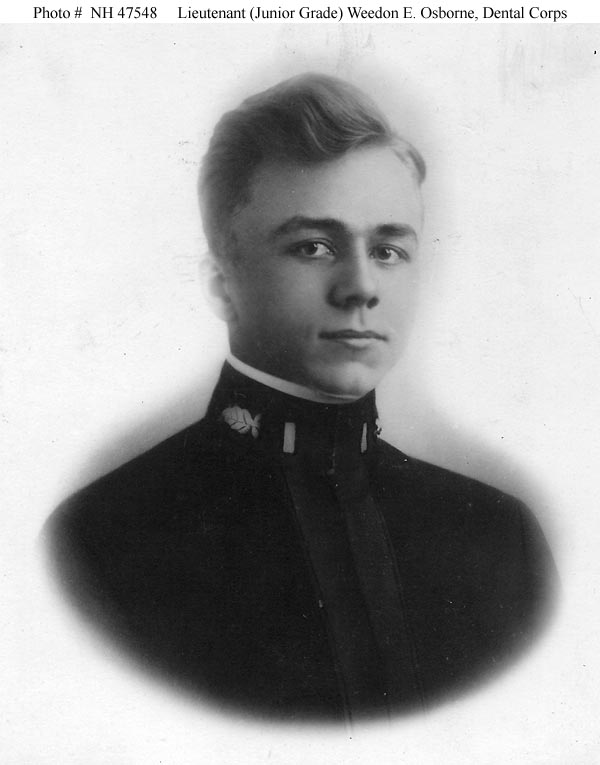
LIEUTENANT (JUNIOR GRADE)
WEEDEN EDWARD OSBORNE, USN (DECEASED)
Weeden Edward Osborne was born in Chicago, Illinois, on 13 November 1893. He grew up on a combined working farm, school, and orphanage for boys, Allendale Farm, Lake Villa, Illinois, after losing both of his parents as a child. He graduated from Northwestern University Dental School in 1915 and was appointed Dental Surgeon in the U.S. Naval Coast Defense Reserve with the rank lieutenant (junior grade) on 8 May 1917. LTJG Osborne served at the Boston Navy Yard and on board the USS Alabama before he transferred to the 6th Regiment of Marines, American Expeditionary Force, France, on 26 March 1918 for service during World War I.
Lieutenant (Junior Grade) Osborne arrived at his new unit on 14 May 1918 only to find that his dental gear had been delayed. It was because of this delay that he volunteered for service on a front line aid party. He was still serving in this capacity weeks later when his unit advanced to Bouresches, France, and encountered the enemy at Belleau Wood. On 6 June 1918, LTJG Osborne zealously threw himself into the work of rescuing the wounded. He was attempting to carry the seriously-wounded Marine Capt Donald Duncan to safety when an artillery shell killed both men instantly. For his selfless devotion to duty, LTJG Osborne was awarded the Navy Medal of Honor and the Army Distinguished Service Cross.
Lieutenant (Junior Grade) Osborne was buried in the National Cemetery, Belleau Aisne, France. He was the first naval officer killed in action on land during World War I and the only Medical Department officer to die in battle in that war.
The destroyer USS Osborne (DD-295) was named in his honor, as was a road at the U.S. Naval Academy. On 25 November 1994, The Weeden E. Osborne Building, Headquarters Building 73 at the Naval Dental Center Great Lakes, Illinois, was also dedicated in his memory.
Navy Medal of Honor recipients serving with Marine units at the time of award